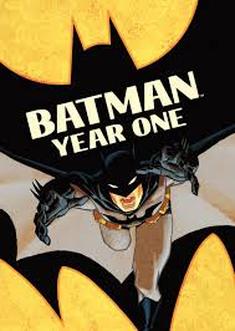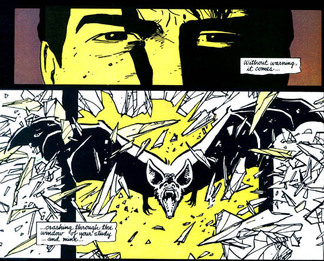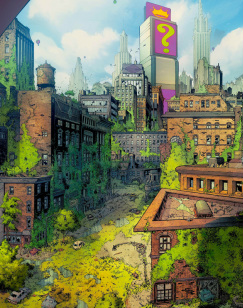 Year One - click for source
Year One - click for source How do you even begin to redefine the origins of Batman, a character with one of the most defined and well-known backstories in comics? There have been films, TV shows, and one particularly well-regarded comic by Frank Miller, who redefined the story in the mid-1980s. And with the latest DC reboot, Scott Snyder finished his own version just recently. But how could he even begin to imagine creating a different Batman origin for The New 52?
In order to best explain where this story comes from, it’s important to briefly look back across the history of Batman and how he began. In the Golden Age, Batman’s origin was effectively as we know it. Orphaned by a criminal in Crime Alley, this darkness pushed young Bruce to a life beneath the cape and cowl.
However, the character took severe swings in tone throughout its existence – from the light-hearted nature of the ‘66 Bill Dozier/Adam West show to the return to master detective under the watch of Denny O’Neil and Neal Adams. That was until Frank Miller, on something of a hot streak with his now legendary Daredevil run, created one of the stories that redefined not only a character but a medium, Batman: The Dark Knight Returns. He then tackled Batman’s origins with Year One.
 Click for source
Click for source One important element of the story is the development of the relationship between Gordon and Batman. Bruce Wayne is a very isolated man, who speaks mainly to his butler, Alfred (and Robin/Dick Grayson in later versions) – but this new relationship, which sees Gordon become his ally, brings another new dynamic to the character.
Fast-forwarding 27 years, Snyder looked to create Zero Year. Divided into three distinct sections, Secret City, Dark City and Savage City, he set about creating a 21st century back story for Batman. By incorporating elements that Batfans would identify with, Snyder managed to create a completely new way of telling a relatively familiar story. He had to include the original plot points of Bruce with his parents in Crime Alley, the realisation of becoming a bat, and creating a relationship with Jim Gordon, however the rest was up for grabs. Snyder used this creative freedom to include an element of corporate espionage within Wayne Enterprises, and shine a spotlight on Bruce and what drove him to become The Bat. This eventually culminates in him revealing the master plan of The Riddler – which we have been teased with throughout the story arc.
 Click for source
Click for source Similarly to Miller’s Year One, in Zero Year Bruce has to make mistakes. We need to see that, at one point in time, Batman was just a man – not the master detective. These vulnerabilities drive the suspense within the stories (although we already know how it ends).
As mentioned, the two clearly share DNA –however it is within their respective contexts that they are best examined. Miller crafted a detective story with a costumed hero, which would eventually become the basis for Batman Begins (2005) – whereas Snyder took a more full-scale approach.
Ultimately, which version works best for the reader depends on how you like your Batman served. Given the time Snyder takes to run through his story, he both requires and justifies its scope, whereas it seems Miller was only ever shooting to show the genesis of the ultimate master detective.

 RSS Feed
RSS Feed
